A Decade Of EPICC Progress In Kids’ Cancer Research
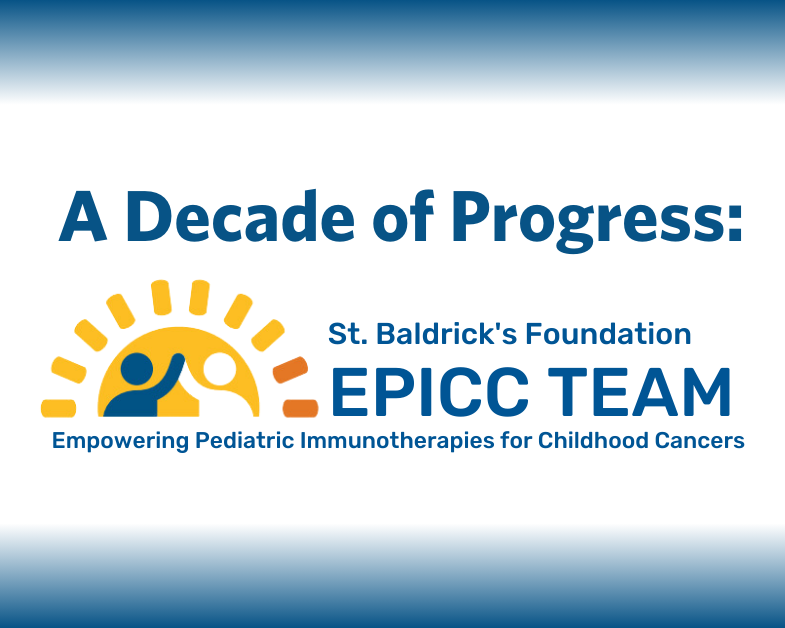
Something extraordinary began in 2013: the first ever pediatric cancer “Dream Team,” funded by the St. Baldrick’s Foundation and Stand Up to Cancer. Combining genomics and immunotherapy in a way that had not been done before, this team of experts at 8 research institutions across the U.S. and Canada set out to create new therapies for the most challenging childhood cancers.
Because of the incredible strides made by the team, the St. Baldrick’s Foundation and the member institutions continued this work, after the funding from Stand Up to Cancer came to an end in 2018.
Now in its third funding period and with a new name, the EPICC Team (Empowering Pediatric Immunotherapies for Childhood Cancer) continues to be led by John Maris, M.D., and Crystal L. Mackall, M.D., and the discoveries continue, saving lives.
Announcing the 2024 St. Baldrick’s Fellows
The St. Baldrick’s Foundation Fellowship award is designed to support the brightest young investigators in the field. This investment of $1.1 million provides support for budding researchers to explore innovative ideas in pediatric cancer research.
Keep scrolling to see the amazing projects your contributions support.
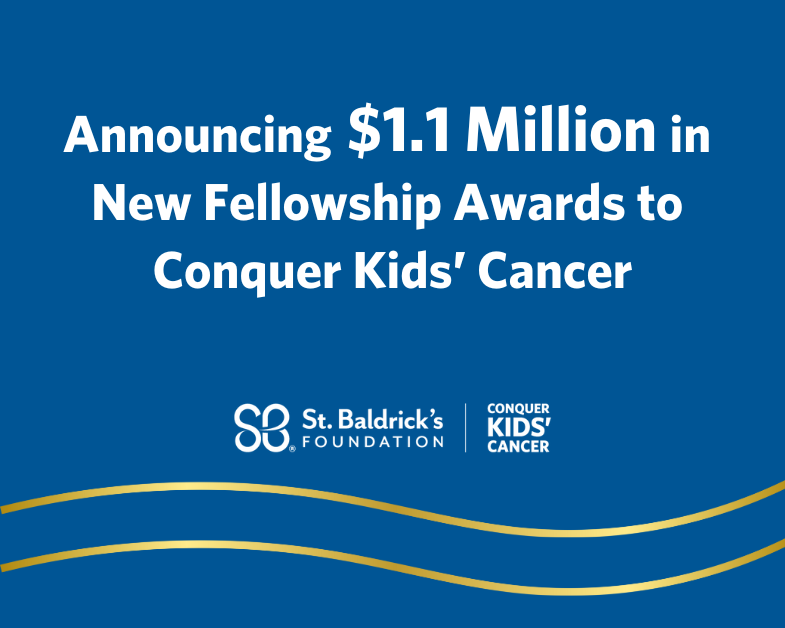
Research Outcomes: Advancing Science Together
Our St. Baldrick’s Foundation Research Outcomes blogs highlight examples of the progress your donations are supporting. This quarterly edition focuses on a new FDA approval for neuroblastoma, strategies to improve T cell functioning, understanding why some kids with medulloblastoma get sicker, and how secondary cancers increase the likelihood of future heart problems.
Thank you for making this research possible.
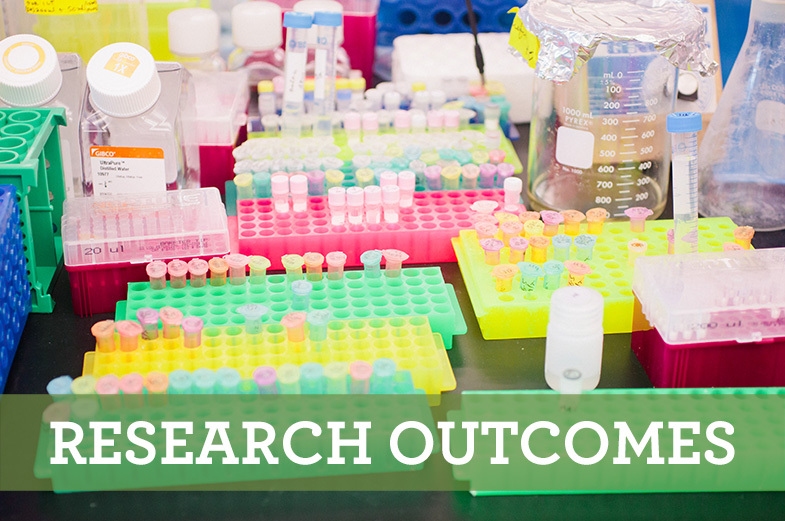
Meet the First St. Baldrick’s Fellow: Dr. Sharon Singh
Where is our very first St. Baldrick’s Fellow now? Still in the lab, that’s where! Meet Dr. Sharon Singh, the physician-scientist who was given the inaugural St. Baldrick’s Fellow Award in 2005. What does that monetary vote of confidence do for a new researcher and for the childhood cancer research field? It’s been 19 years and the results are in – read on to find out.
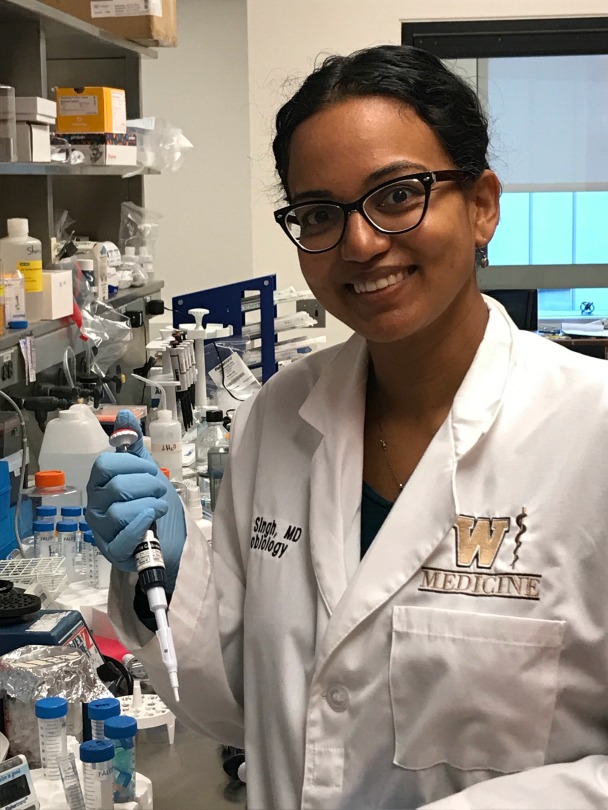
Dr. Sharon Singh currently works as a clinician, researcher, and associate professor at University of Michigan, C.S. Mott Children’s Hospital.
At the heart of it, Dr. Sharon Singh is a problem solver and for the last decade, the pediatric hematologist-oncologist has been working on the problem of childhood cancer. But she knows that the big problem of kids’ cancer can’t be solved only at the bedside of a patient – problem solvers like her need to be in the lab too.
And that is exactly what Dr. Singh is doing, thanks to a St. Baldrick’s grant given almost 20 years ago.
Meet 2024 Ambassador Camden: A Legacy of Strength, Courage, and Resilience
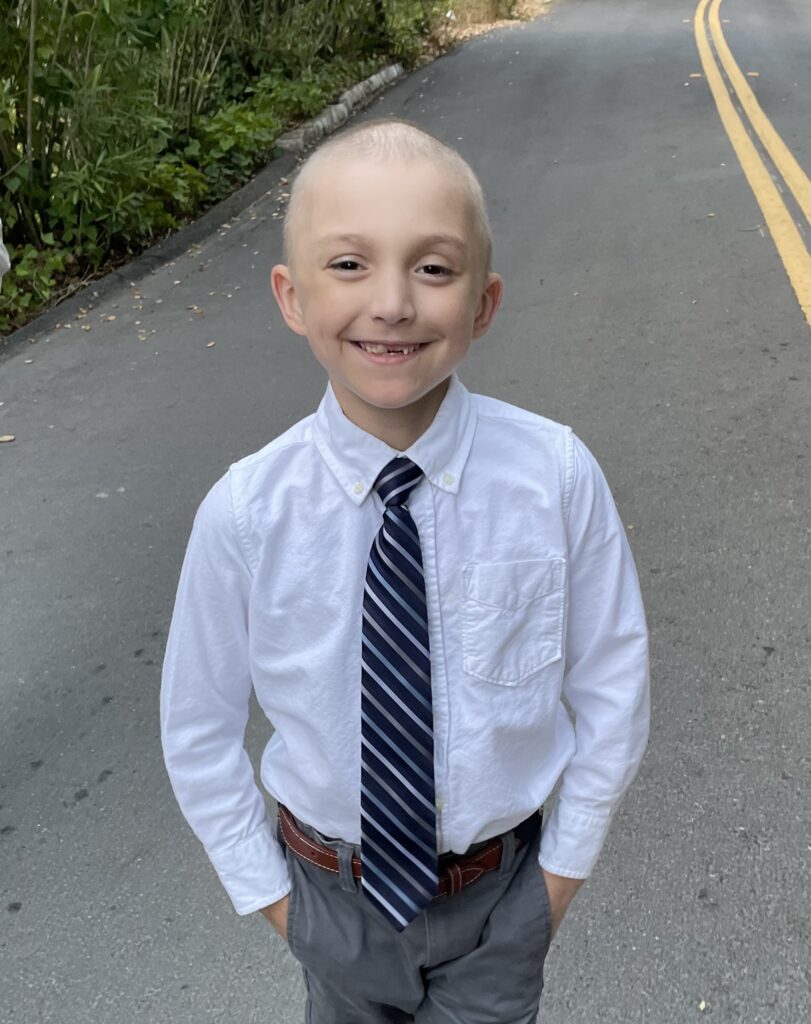
Camden and his smile.
#CammersTough is more than just a hashtag. It represents the story of a boy who fought cancer with incredible strength and courage. His story of resilience in the face of continued hardship is what made him an inspiration to others.
Meet 2024 Ambassador Sam: A Renaissance Man with a Heart for Others
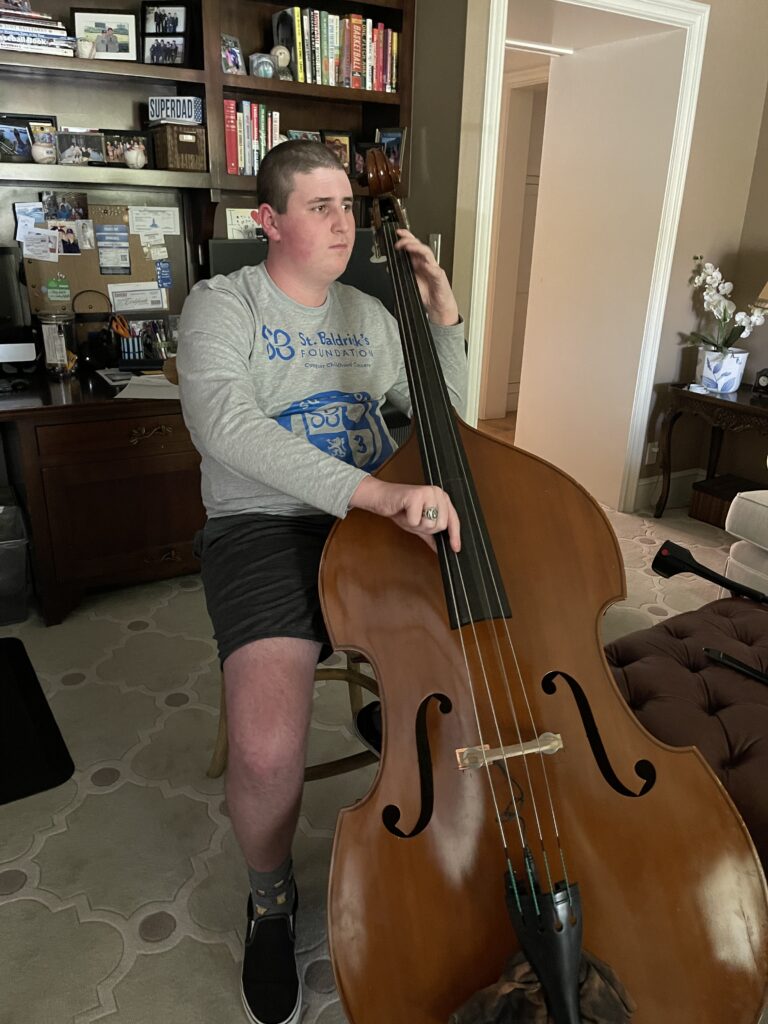
Sam playing the cello.
Twenty-year-old Sam is a Renaissance man – an accomplished musician, pilot, and philanthropist. He’s also a three-time shavee, childhood cancer survivor, and 2024 St. Baldrick’s Ambassador who is committed to making a difference in the lives of other kids with cancer.
Meet 2024 Ambassador Scott: A Childhood Cancer Survivor and Burgeoning Advocate
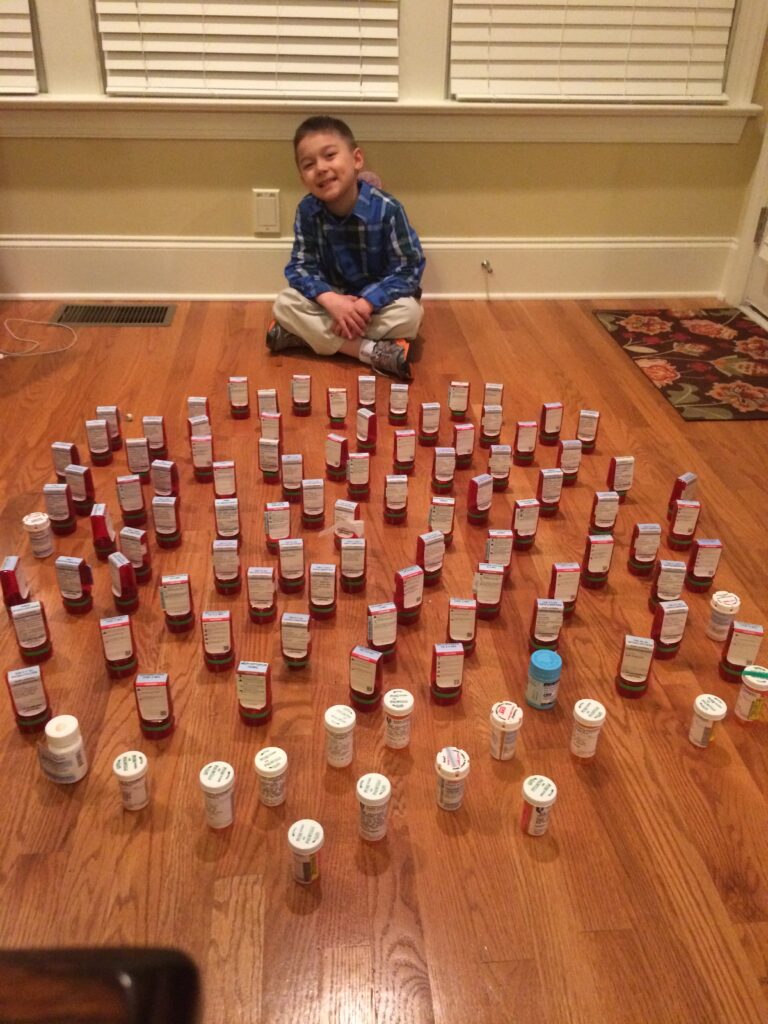
Ambassador Scott and the many pill bottles he went through during treatment.
Scott is a cheerful, hardworking 15-year-old who enjoys football, hanging out with friends, and traveling. His acute lymphoblastic leukemia (ALL) diagnosis at age 3 was a complete shock to his family, especially since he seemed healthy and never even had a sick visit to the pediatrician.
Since he was diagnosed as a toddler, he couldn’t fully understand that by the time he finished treatment 3 ½ years later, he would take more than 1,500 pills, have blood transfusions and countless spinal taps, unpleasant nebulized antibiotic treatments for immunosuppression, and spend more than half of his life on chemo.
Shave for Hope: A Teen’s Inspiring Quest to Conquer Kids’ Cancer
College essays can be written about a lot of topics and Billy chose to write it about how seeing his friend go through grief inspired him to want to make a difference for kids with cancer. His essay was written in spring of 2019 and he attended Coastal Carolina University from September 2020 through December 2022, working toward a business degree. He paused his studies at Coastal Carolina University to work towards his Professional Golfer’s Association (PGA) Associate credentials, where he provides golf instructions, works with the youth golf clinic, and experiences the business aspect of the golf world. Now, Billy is ready to continue his college coursework and will soon be taking online courses to achieve his degree in business.
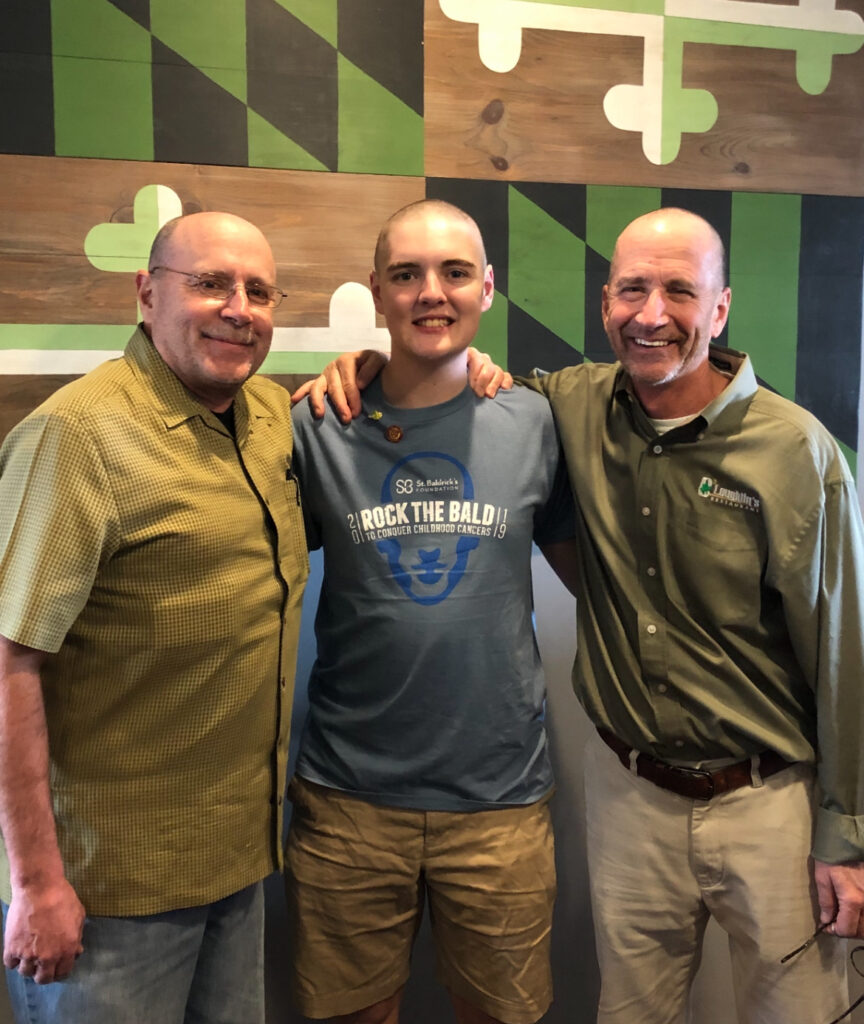
Billy (middle) with the event organizers of the Annual Brave the Shave In Memory of Joey Sudo Event in 2019, Tom Suit (left) and Tom Crawford (right).
Meet 2024 Ambassador Julianna: A Headstrong Kindergartener with a Beautiful Heart for Others
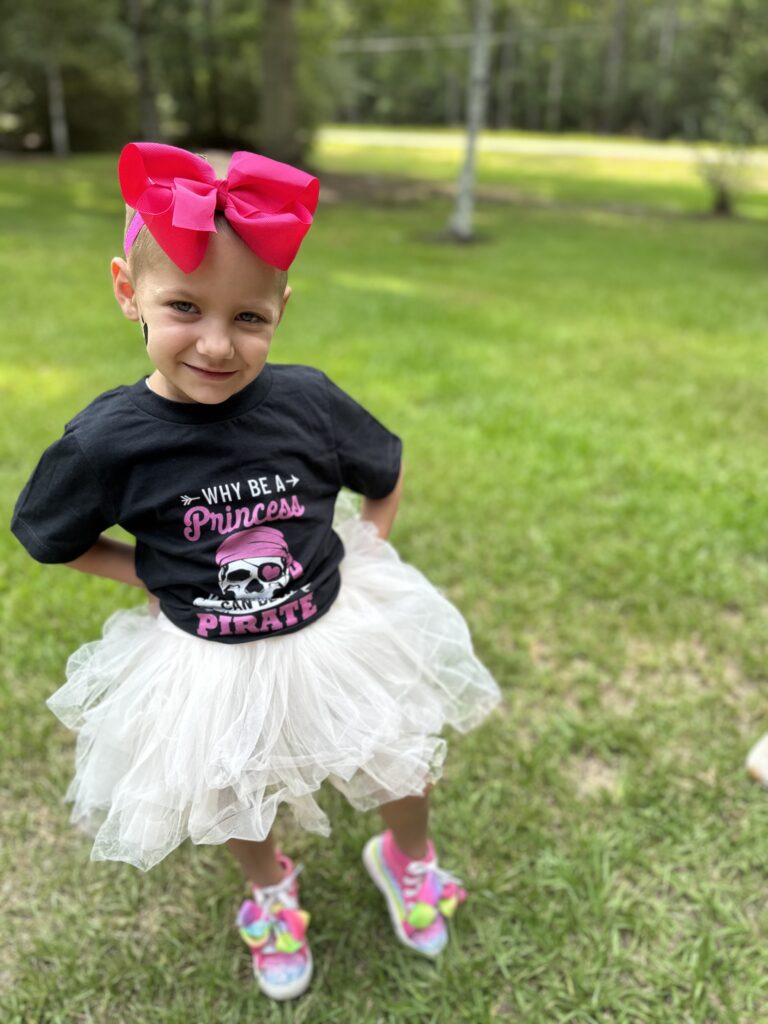
Ambassador Julianna rocking a very cute outfit.
Julianna (a.k.a. Juju) is always on the go. This five-year-old is obsessed with Jack Sparrow, loves swimming, bike riding, dancing, baby dolls, dressing up, playing doctor, school, and church, especially worship music. She expends her energy at dance and cheer camp, and is excited to start gymnastics soon. Above all she cherishes time with her mom and dad, Courtney and Ryan, and big brothers, Hayden and Colbe.
Meet 2024 Ambassador Aaron: A Huge Fan of Queen, Guitar, Lionel Messi, and Giving Back
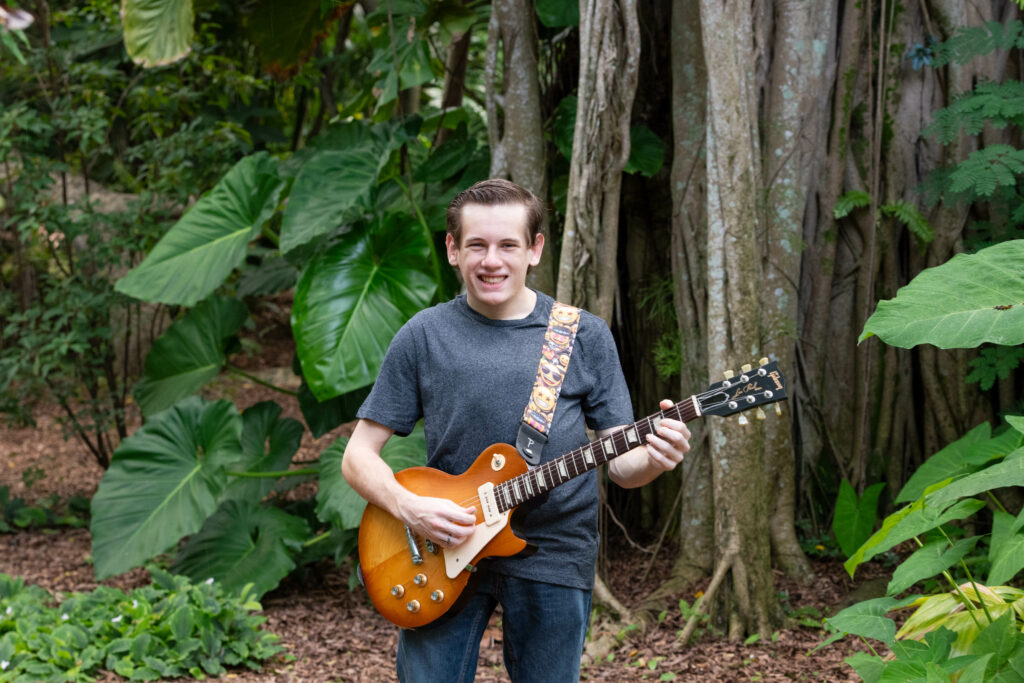
Aaron and his guitar.
Resilient, positive, and determined are a few words that describe 16-year-old Aaron. These traits served him well through his battle with cancer and continue to guide his life today.
When he was 4, Aaron stopped walking. An MRI revealed the cause – a tumor on his spine. His mom, Beth, recalls, “They didn’t wake him up between the MRI and surgery. I remember whispering in his ear that if he made it though, he would get a puppy.” Surgery successfully removed 90% of the tumor. A few days later, his family received the official diagnosis – Ewing sarcoma, a rare bone and soft tissue cancer.
Older Posts »

 SBF
Tweets »
SBF
Tweets »